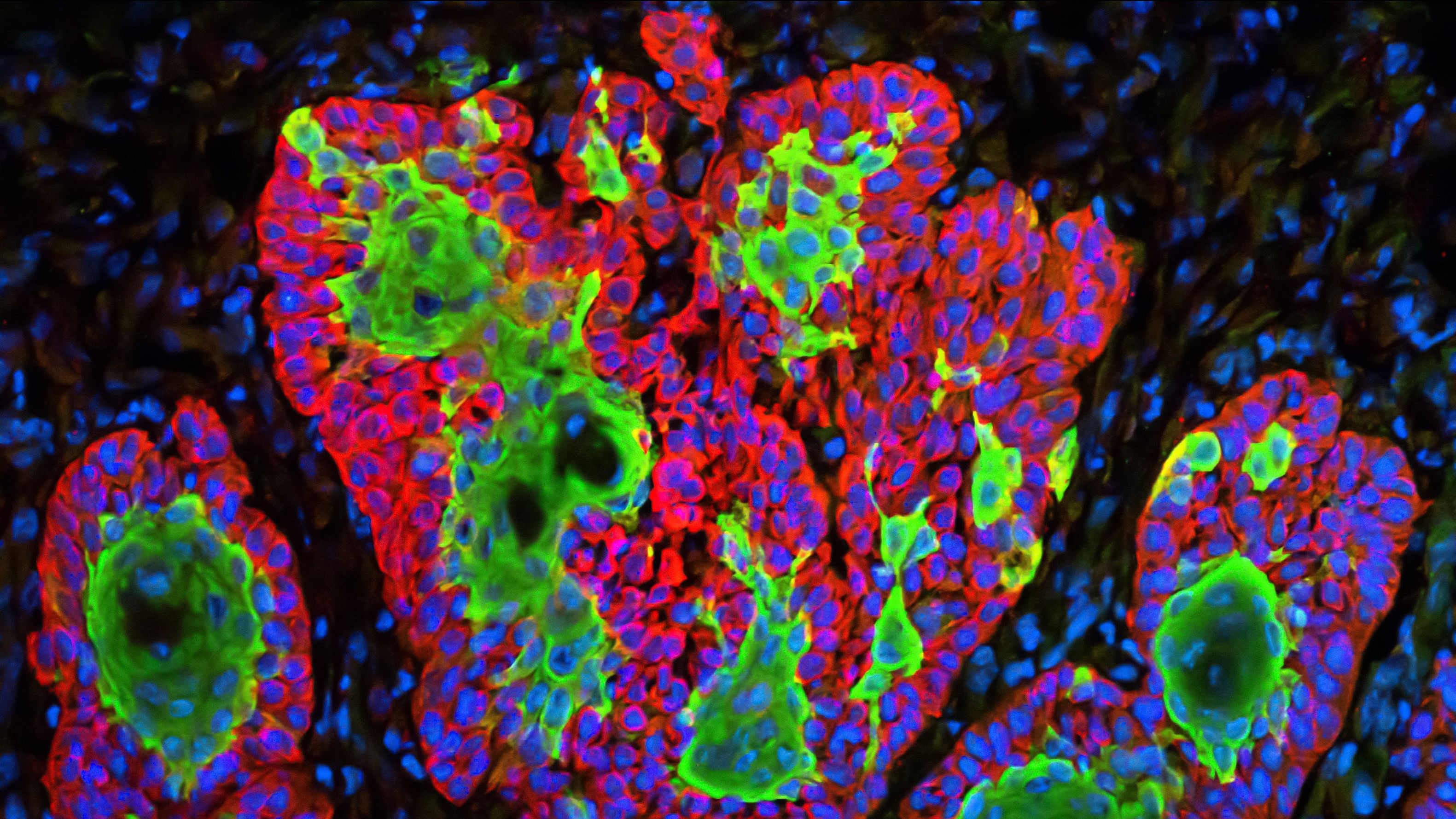
Representative Image.
Credit: Unsplash
In a video footage from a couple of months ago, actor Hugh Jackman appeared with a bandage around his nose after having undergone a biopsy for a skin cancer called Basal Cell Carcinoma (BCC). He sent out a message urging people to use sunscreens to avoid getting skin cancer as it happens to be the most common type of cancer around the world.
The skin has an upper layer called the epidermis from where the new cells are produced to replace the old cells. Cancerous changes can happen in sun-exposed areas such as the face, ears, hands, shoulders, upper chest, and back resulting in BCC or Squamous Cell Carcinoma (SCC). Eight out of 10 skin cancers happen to be BCC. Both are quite common in the Western Hemisphere, as 5.4 million cases are diagnosed annually in the USA.
BCC is a slow-growing skin cancer that is invasive locally but very rarely spreads to distant areas. They can present as a bump over the skin (nodule) or as an ulcer that is not healing, and it might or might not bleed.
Ultraviolet rays from the sun can be UVA (95% of Ultraviolet radiation) and UVB (5% of radiation) and UVC (less than 1%). UVA reaches the earth’s surface with constant intensity over the course of the day. It penetrates the Ozone layer, clouds, and window glass. It can penetrate the skin deeply causing ageing of the skin and cancer development. UVB peaks in intensity around mid-day. However, this is not absorbed deeply inside the skin and does not cause cancer.
There are other causes that predispose an individual to getting skin cancer. If one previously had cancer like BCC or SCC, has a family history of cancer, has pale skin that burns easily, has many moles on the skin, and is on immune-suppressing medications or an immune-suppressing condition like organ transplantation, HIV, or blood cancer, this risk increases.
However, sun exposure alone is responsible for 90% of the skin cancers in the Indian context according to Prof Sacchidanand, a dermatologist, and author of many books in this area.
The rule of ABCDE is followed in any skin lesion. A=Asymmetrical lesions where one half does not match the other half, B=any skin growth having uneven borders, C= variety of skin colours like brown, tan, and black, D=diameter of the skin lesion increasing, E=evolution with size, shape, colour, and elevation. If any of these suspicious skin lesions are present, consulting a dermatologist is necessary.
A dermatologist or skin cancer specialist can diagnose BCC clinically without the need for a skin biopsy.
A biopsy is suggested when there is clinical doubt or if the treatment would be influenced by the subtype.
The main treatment for this type of skin cancer is with local surgical excision, other popular methods are cryosurgery (a procedure in which an extremely cold liquid like liquid nitrogen, liquid nitrous oxide, or compressed argon gas) or an instrument called a cryoprobe is used to freeze and destroy abnormal tissue. Radiotherapy and Photodynamic therapy are other modalities used.
“These types of skin cancers are lifestyle disorders and the way to reduce the risk is to minimise sun exposure,” advises Dr Sacchidanand. He advises the importance of sun-safe practices which include avoidance.
UVA in the Indian context is minimal between 8 am and 10 am and peaks between 12 pm and 2 pm. Outdoor exercises and activities if minimised during the peak exposure, are better. Cover as much of the body as possible with cotton wear.
There are sunscreens available that contain chemical (organic) or physical (inorganic) compounds that act to block ultraviolet radiation. The chemical filters are compounds that absorb the high-intensity radiation resulting in excitation to higher energy states and when they return to ground states, it results in the conversion of the absorbed energy into lower energy wavelengths such as infrared radiation (heat) that does not cause skin damage.
The protective effect of sunscreen is measured by Sun Protective Factor (SPF). For those not exposed to the sun regularly, an SPF of 15 plus, and for those who have regular outdoor activity, SPF of 30 plus is advised. Sunscreen usage is recommended across all age groups and during outdoor activity. Sunny days, cloudy days, and snowfall are all equally harmful as UVA is present in all these settings. For those involved in outdoor sporting activities, an SPF of 30 plus is advocated. They must make sure to apply over the face, lips, and forearm before stepping out, adds Dr Sacchidanand.
Recent evidence suggests that sunscreens remain in the skin offering the required protection for as long as eight hours.
Reapplication is advised after sweating, water contact, or friction from clothing. Sunscreen ingredients have been found in the blood, however, no potential health harm has been established so far.
The effects of sunscreen ingredients on coral reefs are a current focus of the investigation.
For those who are at risk due to sun exposure, vitamin D can be supplemented with foods rich in vitamin D and oral vitamin D supplementation if found to be deficient.
(The author is a consultant haemato-oncologist with a special interest in stem cell transplantation at Royal Wolverhampton NHS Trust, UK. He can be reached at praveen.kaudlay1@nhs.net)